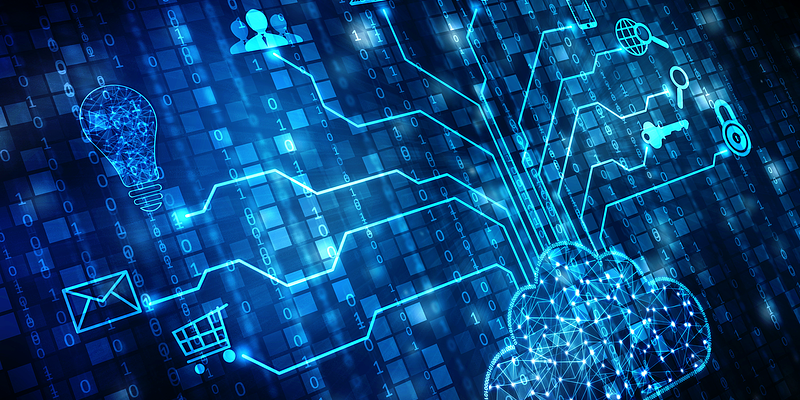Modern, national and global enterprises face multidimensional challenges and opportunities, now occurring with unprecedented speed, unpredictability, and frequency.
They must not only anticipate and preempt brand and reputational risks, but also mobilize quickly and effectively in response to a wider range of high-impact events such as accidents, natural disasters, geopolitical incidents, and cyber and physical security threats.
As our President and COO Jason Edelboim discussed in his recent post, “The Future State of Corporate Risk in the Information Age”, we at Dataminr see the change in the corporate risk environment through the lens of the “surface areas” that emerging risks and threats can now impact. We believe that a real-time information platform plays a critical role in helping to mitigate corporate risk by empowering every departmental leader to participate in a more coordinated and contextual response.
These environmental shifts across corporate risk have caused executives to evolve their priorities. Shorter-term strategic priorities will still focus on the protection of physical assets and operations, especially over the next 1 – 2 years. However, an increased focus on the threats hitting cyber, operational, and reputational areas of an organization means that leaders are now looking for ways to reduce cost and increase the efficiency of the technology platforms they use to manage risk.
Similar to the BYOD disruption of enterprise hardware in the early 2000s and then again with the cloud in the 2010s, the corporate risk mitigation space is rapidly embracing modern technologies.
At Dataminr, we believe that four key technology trends will define the future of corporate risk:
1. The Shift to Cloud-based Services
Enterprises continue to deploy as many of their workloads to the cloud as possible. The migration of a workload to the cloud is triggered when one or more of the following criteria are experienced by an organization:
- There is now a high cost of maintaining the existing functionality on-premises
- There is a lack of access to the latest technology innovations
- The current system exhibits a lack of interoperability with other line-of-business systems, preventing integrations
- Democratization of the platform is very difficult because of the lack of endpoint support and end-user design
Similar to what happened with the workloads supporting productivity, communications, and then data, risk is now in this state for many organizations and is a reason they are rapidly moving to pure-cloud solutions for their risk technology portfolio whenever possible.
For Dataminr, cloud computing provides an essential ingredient for our success. Dataminr’s AI platform relies heavily on processing techniques like massive parallel processing in real time, and AI methods like deep learning and neural networks — both of which wouldn’t be possible at the speed of real time and the scale of public data without cloud computing.
2. The Internet of Things
The total installed base of Internet of Things (IoT) connected devices is projected to amount to 75.44 billion worldwide by 2025, a fivefold increase in ten years1. Public data generated by these devices make up an increasing portion of the diverse sources that are integrated into the Dataminr AI platform.
As the amount of IoT devices that produce real-time public data stream goes up and the use cases within organizations expand, having a real-time risk platform that can adapt to the IoT landscape and its rapidly evolving set of devices and standards will be critical to mitigating corporate risk.
Alex Jaimes, our Chief Scientist and SVP of AI, shared a great set of examples about how we use IoT data in his post, “Multi-Modal Understanding and Summarization of Critical Events for Emergency Response”. I am constantly amazed by the use of IoT devices at some of our biggest Dataminr customers and am excited about their evolution.
3. Big Data and Artificial Intelligence Maturity
Trends 1 and 2 naturally build on each other to create a need for trend 3: Big Data and AI. Most organizations are not big data or AI companies, as their core business is built on things like manufacturing, retail, or services. The accumulation of data within these organizations over the last decade has caused some of the biggest companies to start small, focused data teams to ensure they are utilizing the information generated by their own systems effectively and correctly — a feat that still requires massive capital investments in technology and people.
But, these enterprises now find themselves operating in an era where a significant portion of the data that is most relevant to protecting an organization’s assets and personnel is being generated outside of the organization, via social media, blogs, web forums, and sensors — data published by the general public. Public data generated outside of these organizations, numbering in the billions and billions of public data units per day, is becoming increasingly critical for managing the full spectrum of corporate risk.
AI is also a brand new domain for most of these organizations. Yet, to address the public data landscape most effectively, it requires the industry’s leading AI talent, leveraging a broad range of AI methods from several scientific fields, and a vast historical data archive on which to build, train and optimize AI models. A diverse spectrum of AI approaches is needed for processing the variety of data types and formats found in public data, spanning text in multiple languages, images, video, sound, and data from sensors.
The scale of this public data landscape is growing exponentially as a function of the broadening and diversifying social media landscape and the rise of IoT devices. It is also extremely challenging to amass the breadth of AI talent and technology required to process and make sense of it. These factors make it impossible to bring “in-house” for almost all organizations, leading them to rely on external cloud-based SaaS solutions.
In order to address these challenges for corporations, Dataminr’s AI platform spans natural language understanding for text, computer vision for images and video, and anomaly detection techniques for data streams. Dataminr’s AI platform takes full advantage of its proprietary 10-year historical data archive that includes trillions of public data units. To optimize for the unique attributes of streaming real-time public data sets, Dataminr’s AI and ML models are all internally built, trained, and continuously updated by members of our 116 person team of AI experts, engineers, and researchers. This world-class team includes 11 PhDs in AI, engineers who joined Dataminr from Facebook, Yahoo, Google, Microsoft, and Amazon, and engineering talent from top universities including MIT, Carnegie Mellon, Columbia, Cornell, and Oxford.
4. Mobility and Individual Empowerment
Mobility has changed nearly every part of our work and professional lives. It heralded the consumerization of IT in the early 2000s and then forever changed productivity in the 2010s. Most relevant to Dataminr and to corporate risk, mobile phones have become the endpoint of choice for public social media posts and a key driver in the changing public information landscape. This centers around the proliferation of “one-to-many” digital publishing — the public sharing of content from a mobile phone out to a broad network and to the world-at-large.
On the mobile consumption side, we now see an increase in the amount of “in-the-field” mobile users in various enterprise and organization types — retail store associates, plant regional security managers, executive protection field teams, traveling salespeople, even local baristas — using their personal mobile device to stay abreast of social media about their parent company and/or to “watch” the physical area around their store or location to keep safe.
These “in-the-field” individuals do this because of their own personal desires to feel safe and empowered. This introduces new challenges for many organizations — the current way these employees receive this real-time information, often through consumer apps, does not fit into any unified risk response, and in some cases could impact the duty of care an organization may have for that employee.
Employee empowerment is also something being driven from the top-down. I’ve spoken with several different customers in the retail sector who all have employee retention as a critical KPI for their businesses, and who see a mobile risk solution as a way to empower their employees and make them feel safer and happier in their roles.
At Dataminr we feel it is imperative to think about every user in your organization that needs to feel empowered with some level of real-time risk mitigation. The Dataminr mobile platform enables “personalized safety” for employees — allowing our customers to bring a localized level of real-time information awareness to their field and remote employees, while also having it be a part of a unified risk enterprise corporate risk platform.
Dataminr believes these four key technology trends — the cloud, IoT, big data & AI, and mobility — will define the future state of corporate risk.
1Source: Statista, “Internet of Things (IoT) connected devices installed base worldwide from 2015 to 2025 (in billions)”, link



